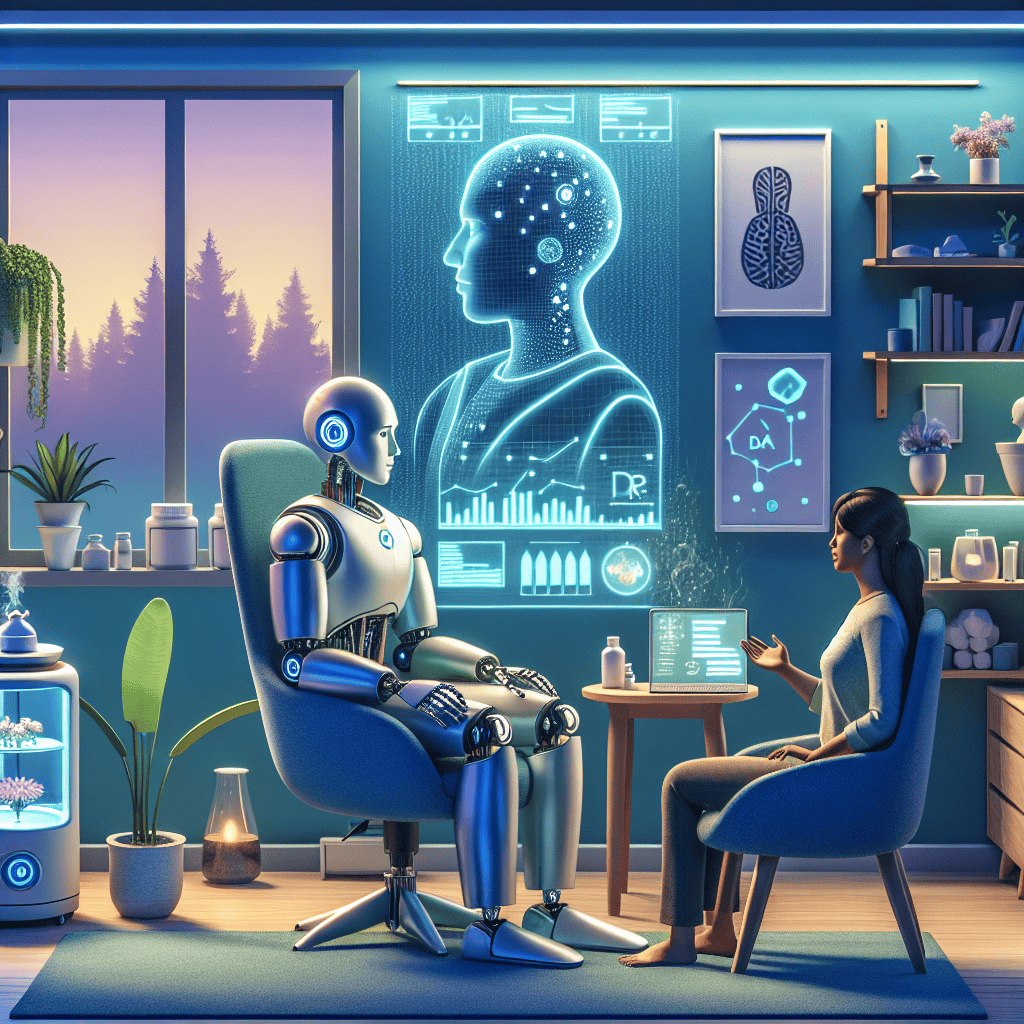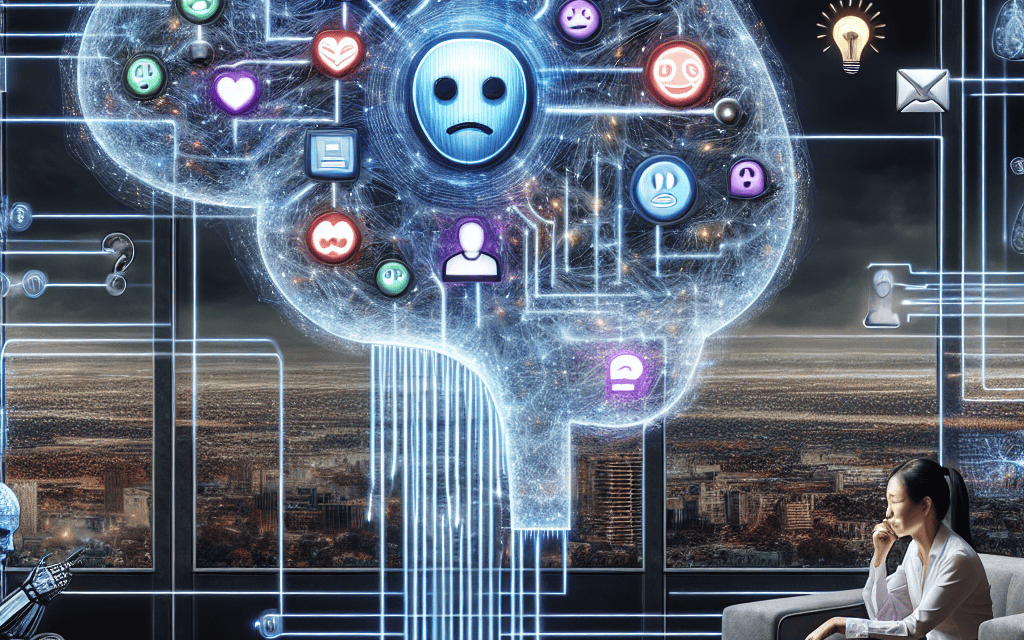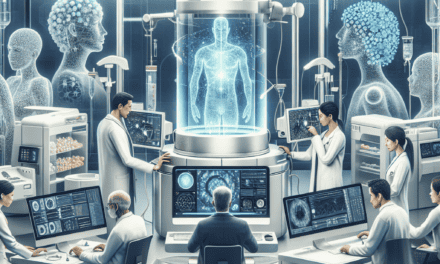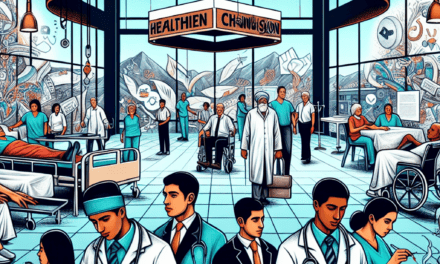-
Table of Contents
- The Role of AI in Mental Health Diagnosis and Treatment
- 1. AI in Mental Health Diagnosis
- 1.1 Machine Learning Algorithms
- 1.2 Predictive Analytics
- 1.3 Image and Voice Analysis
- 1.4 Case Studies and Real-World Applications
- 1.5 Challenges and Ethical Considerations
- 2. AI in Mental Health Treatment
- 2.1 Personalized Treatment Plans
- 2.2 Virtual Reality Therapy
- 2.3 Chatbots and Digital Therapists
- 2.4 Case Studies and Success Stories
The Role of AI in Mental Health Diagnosis and Treatment

Artificial Intelligence (AI) is revolutionizing various sectors, and mental health care is no exception. With the increasing prevalence of mental health disorders worldwide, there is a pressing need for innovative solutions to enhance diagnosis and treatment. AI offers promising tools and methodologies that can transform mental health care, making it more accessible, accurate, and personalized. This article explores the multifaceted role of AI in mental health diagnosis and treatment, delving into its potential, challenges, and future prospects.
1. AI in Mental Health Diagnosis
The diagnosis of mental health disorders has traditionally relied on subjective assessments by clinicians, often leading to variability in diagnosis. AI technologies are now being leveraged to provide more objective, data-driven insights into mental health conditions.
1.1 Machine Learning Algorithms
Machine learning (ML) algorithms are at the forefront of AI applications in mental health diagnosis. These algorithms can analyze vast amounts of data to identify patterns and correlations that may not be apparent to human clinicians. For instance, ML models can process data from electronic health records, social media activity, and even voice recordings to detect signs of mental health disorders.
One notable example is the use of natural language processing (NLP) to analyze text data from social media platforms. Studies have shown that changes in language patterns, such as increased use of negative words or first-person pronouns, can indicate depression or anxiety. By training ML models on such data, researchers can develop tools that flag potential mental health issues for further evaluation.
1.2 Predictive Analytics
Predictive analytics is another area where AI is making significant strides. By analyzing historical data, AI systems can predict the likelihood of a person developing a mental health disorder. This is particularly useful for early intervention, as it allows healthcare providers to identify at-risk individuals and offer preventive measures before symptoms become severe.
For example, a study conducted by researchers at Harvard University used AI to predict the onset of depression in adolescents. By analyzing data from wearable devices, such as sleep patterns and physical activity levels, the AI model was able to identify individuals at high risk of developing depression with remarkable accuracy.
1.3 Image and Voice Analysis
AI is also being used to analyze images and voice recordings for diagnostic purposes. Advanced image recognition algorithms can assess facial expressions and body language to detect emotional states, while voice analysis tools can identify changes in tone, pitch, and speech patterns that may indicate mental health issues.
For instance, researchers at the University of Southern California have developed an AI system that analyzes video recordings of patients to assess their emotional well-being. The system uses computer vision techniques to track facial expressions and body movements, providing clinicians with valuable insights into the patient’s mental state.
1.4 Case Studies and Real-World Applications
Several real-world applications of AI in mental health diagnosis have demonstrated its potential. For example, the AI-based app “Woebot” uses NLP to engage users in conversations and assess their mental health status. The app has been shown to reduce symptoms of anxiety and depression in users, highlighting the effectiveness of AI-driven diagnostic tools.
Another case study involves the use of AI in diagnosing schizophrenia. Researchers at IBM developed an AI model that analyzes brain scans to identify biomarkers associated with schizophrenia. The model achieved an accuracy rate of over 80%, demonstrating the potential of AI in diagnosing complex mental health disorders.
1.5 Challenges and Ethical Considerations
Despite the promising advancements, there are several challenges and ethical considerations associated with using AI for mental health diagnosis. One major concern is the potential for bias in AI models, which can arise from biased training data. This can lead to inaccurate diagnoses, particularly for minority groups who may be underrepresented in the data.
Additionally, there are privacy concerns related to the use of personal data for AI analysis. Ensuring the confidentiality and security of sensitive information is paramount to gaining public trust in AI-driven mental health tools. Ethical guidelines and regulations must be established to address these issues and ensure the responsible use of AI in mental health care.
2. AI in Mental Health Treatment
Beyond diagnosis, AI is also playing a crucial role in the treatment of mental health disorders. From personalized therapy to virtual reality interventions, AI technologies are enhancing the effectiveness and accessibility of mental health treatments.
2.1 Personalized Treatment Plans
AI enables the development of personalized treatment plans tailored to the unique needs of each patient. By analyzing data from various sources, such as genetic information, lifestyle factors, and treatment history, AI systems can recommend the most effective interventions for individual patients.
For example, AI-driven platforms like “Ginger” use machine learning algorithms to match patients with therapists who have the expertise and experience to address their specific needs. This personalized approach has been shown to improve treatment outcomes and patient satisfaction.
2.2 Virtual Reality Therapy
Virtual reality (VR) therapy is an innovative treatment modality that leverages AI to create immersive environments for therapeutic purposes. VR therapy has been used to treat a range of mental health disorders, including post-traumatic stress disorder (PTSD), phobias, and anxiety disorders.
AI plays a crucial role in VR therapy by adapting the virtual environment to the patient’s responses. For instance, in exposure therapy for phobias, AI algorithms can adjust the intensity of the virtual stimuli based on the patient’s anxiety levels, ensuring a gradual and controlled exposure.
Studies have shown that VR therapy can be as effective as traditional therapy methods, with the added benefit of being more engaging and accessible. This makes it a valuable tool for patients who may have difficulty accessing in-person therapy sessions.
2.3 Chatbots and Digital Therapists
AI-powered chatbots and digital therapists are becoming increasingly popular as a means of providing mental health support. These tools offer 24/7 access to mental health resources, making them a convenient option for individuals seeking immediate assistance.
Chatbots like “Wysa” and “Replika” use NLP to engage users in therapeutic conversations, providing support and guidance for managing mental health challenges. While these tools are not a replacement for professional therapy, they can serve as a valuable supplement, particularly for individuals who may be hesitant to seek traditional therapy.
2.4 Case Studies and Success Stories
Several case studies highlight the success of AI-driven mental health treatments. For instance, a study conducted by Stanford University found that an AI-powered digital therapist was able to reduce symptoms of depression in participants by 30% over a six-week period. The digital therapist used cognitive-behavioral therapy (CBT) techniques to engage users and provide personalized feedback.
Another success story involves the use of AI in treating PTSD among veterans. The “Bravemind” VR therapy program, developed by the University of Southern California, uses AI to create realistic combat





